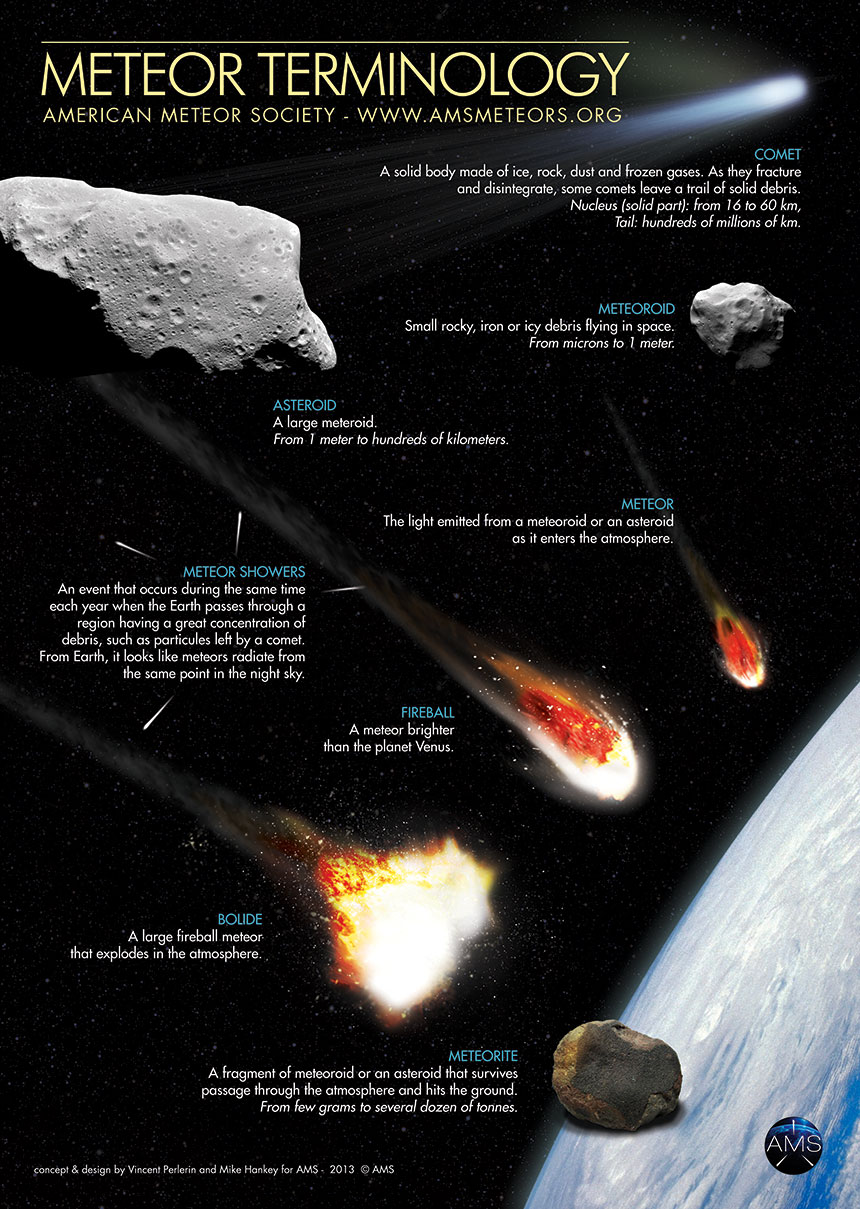Few months ago, we created a poster about Meteor Terminology. We received a lot of comments about this poster. We took some of them into account to create this new version.
You can download the PDF here.

AMS Meteor Terminology
Few months ago, we created a poster about Meteor Terminology. We received a lot of comments about this poster. We took some of them into account to create this new version.
You can download the PDF here.

AMS Meteor Terminology
1. Meteoroids may be larger than 1 meter. To provide the Chelyabinsk bolide the incoming body has to be 17 meters in diameter. I think it would be better to determine “meteoroids” as space bodies with dimension from micron to 100 ft (30 meters).
2. Asteroids believed to be hard iron or stone bodies as a contrast to comet nuclei that consists mainly of volatiles. This difference has to be fixed in terminology.
3. Comets if they are primordial planetesimales consist of volatiles and dust particles only. Comet nuclei of the second generation contain large refractory particles, so they can produce meteoroids after decay. Besides that there are mini-comets in the space which impacts are observed as bolides in the Earth’s atmosphere and as flashes on the Moon. So comets would be better to determine as “space bodies from few meters to several kilometers in diameter consisted mainly of volatiles.
I would be curious to see a copy of your original poster before you made revisions. Back in 2008, I wrote an article about this very subject (Meteor terminology):
http://meteorite-recovery.tripod.com/2008/mar08.htm